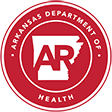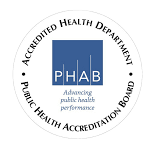Tickborne Disease
Facts and Information
Tickborne Disease (TBD) is a type of zoonotic disease (an infectious disease transmitted between animals and humans) that is transmitted by ticks, which are not insects but a member of the arachnid class of arthropods. In Arkansas, ticks are responsible for more human disease than any other arthropod or insect, but not all ticks transmit disease. Of the many different tick species found in Arkansas, only a select few bite and transmit disease to humans.
In Arkansas, the tickborne diseases known to occur are:
- Rocky Mountain spotted fever (RMSF)
- Ehrlichiosis
- Tularemia
- Anaplasmosis
- Lyme Disease
- Southern Tick Associated Rash Illness (STARI)
- Alpha-Gal
- Other Emerging Tickborne
Many tickborne diseases can have similar signs and symptoms. If you have been bitten by a tick and develop the symptoms below within a few weeks, a health care provider should evaluate the following before deciding on a course of treatment:
- Your symptoms
- The geographic region in which you were bitten
- Diagnostic tests, if indicated by the symptoms and the region where you were bitten
The most common symptoms of tick-related illnesses are:
- Fever/chills: With all tickborne diseases, patients can experience a fever at varying degrees and times of onset.
- Aches and pains: Tickborne disease symptoms include headache, fatigue, and muscle aches. With Lyme disease, you may also experience joint pain. The severity and time of onset of these symptoms can depend on the disease and the patient's personal tolerance level.
- Rash: Lyme disease, southern tick-associated rash illness (STARI), Rocky Mountain spotted fever (RMSF), ehrlichiosis, and tularemia can result in distinctive rashes.
Tickborne diseases can result in mild symptoms treatable at home to severe infections requiring hospitalization. Although easily treated with antibiotics, these diseases can be difficult for physicians to diagnose. However, early recognition and treatment of the infection decrease the risk of serious complications. So see your doctor immediately if you have been bitten by a tick and experience any of the symptoms described here.
Tickborne diseases cannot be spread by person-to-person contact.
Tick Species
American Dog tick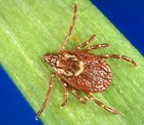
American dog tick (Dermacentor variabilis) is the most commonly identified species responsible for transmitting Rickettsia rickettsii, which causes Rocky Mountain spotted fever in humans. The American dog tick can also transmit tularemia. This tick is widely distributed east of the Rocky Mountains and also occurs in limited areas on the Pacific Coast. D. variabilis larvae and nymphs feed on small rodents. Dogs and medium-sized mammals are the preferred hosts of adult D. variabilis, although it feeds readily on other large mammals, including humans.
Blacklegged tick
The black-legged tick (Ixodes scapularis), commonly known as a "deer tick", can transmit the organisms responsible for anaplasmosis, babesiosis, and Lyme disease. This tick is widely distributed in the northeastern and upper midwestern United States. I. scapularis larvae and nymphs feed on small mammals and birds, while adults feed on larger mammals and will bite humans on occasion. It is important to note that the pathogen that causes Lyme disease is maintained by wild rodent and other small mammal reservoirs, and is not transmitted everywhere that the black-legged tick lives. In some regions, particularly in the southern U.S., the tick has very different feeding habits that make it an unlikely vector in the spread of human disease.
Brown Dog tick
The brown dog tick (Rhipicephalus sanguineus) has recently been identified as a reservoir of R. rickettsii, causing Rocky Mountain spotted fever, in the southwestern U.S. and along the U.S-Mexico border. Brown dog ticks are found throughout the U.S. and the world. Dogs are the primary host for the brown dog tick for each of its life stages, although the tick may also bite humans or other mammals.
Gulf Coast tick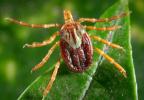
The Gulf Coast tick resides in coastal areas of the United States along the Atlantic coast and the Gulf of Mexico. The Gulf Coast tick can transmit Rickettsia parkeri rickettsiosis, a form of spotted fever. A. maculatum larvae and nymphs feed on birds and small rodents, while adult ticks feed on deer and other wildlife. Adult ticks have been associated with the transmission of R. parkeri to humans.
Lone Star tick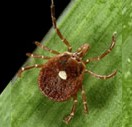
The lone star tick (Amblyomma americanum) transmits Ehrlichia chaffeensis and Ehrlichia ewingii, causing human ehrlichiosis, tularemia, and STARI. The lone star tick is primarily found in the southeastern and eastern United States. White-tailed deer are a major host of lone star ticks and appear to represent one natural reservoir for E. chaffeensis. A. americanum larvae and nymphs feed on birds and deer. Both nymphal and adult ticks may be associated with the transmission of pathogens to humans.
Resources:
| Office | Address | Phone | Fax |
| Zoonotic Disease | 4815 W. Markham St., Slot 42 Little Rock, AR |
501-661-2381 | 501-280-4431 |
